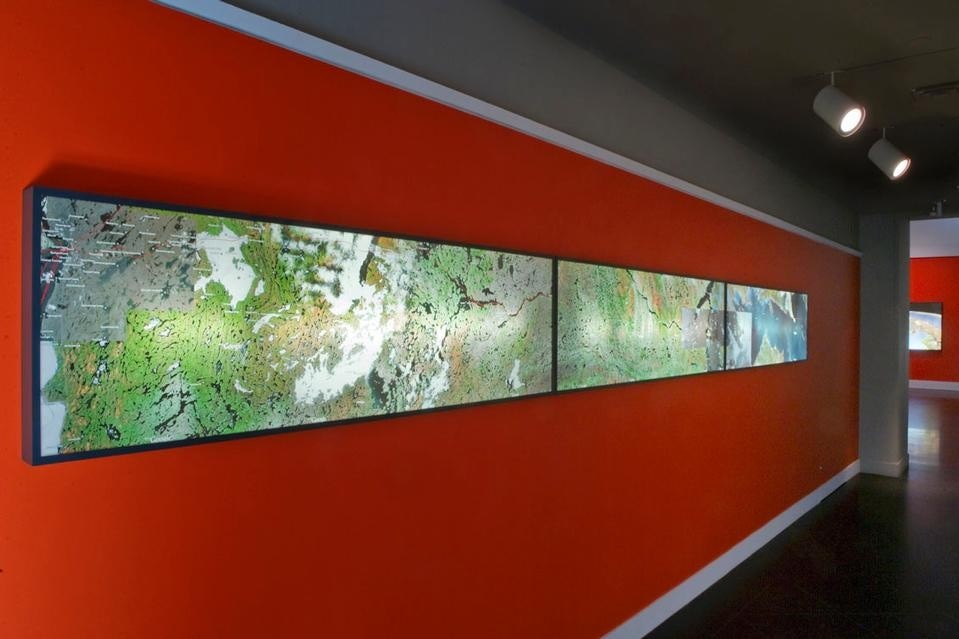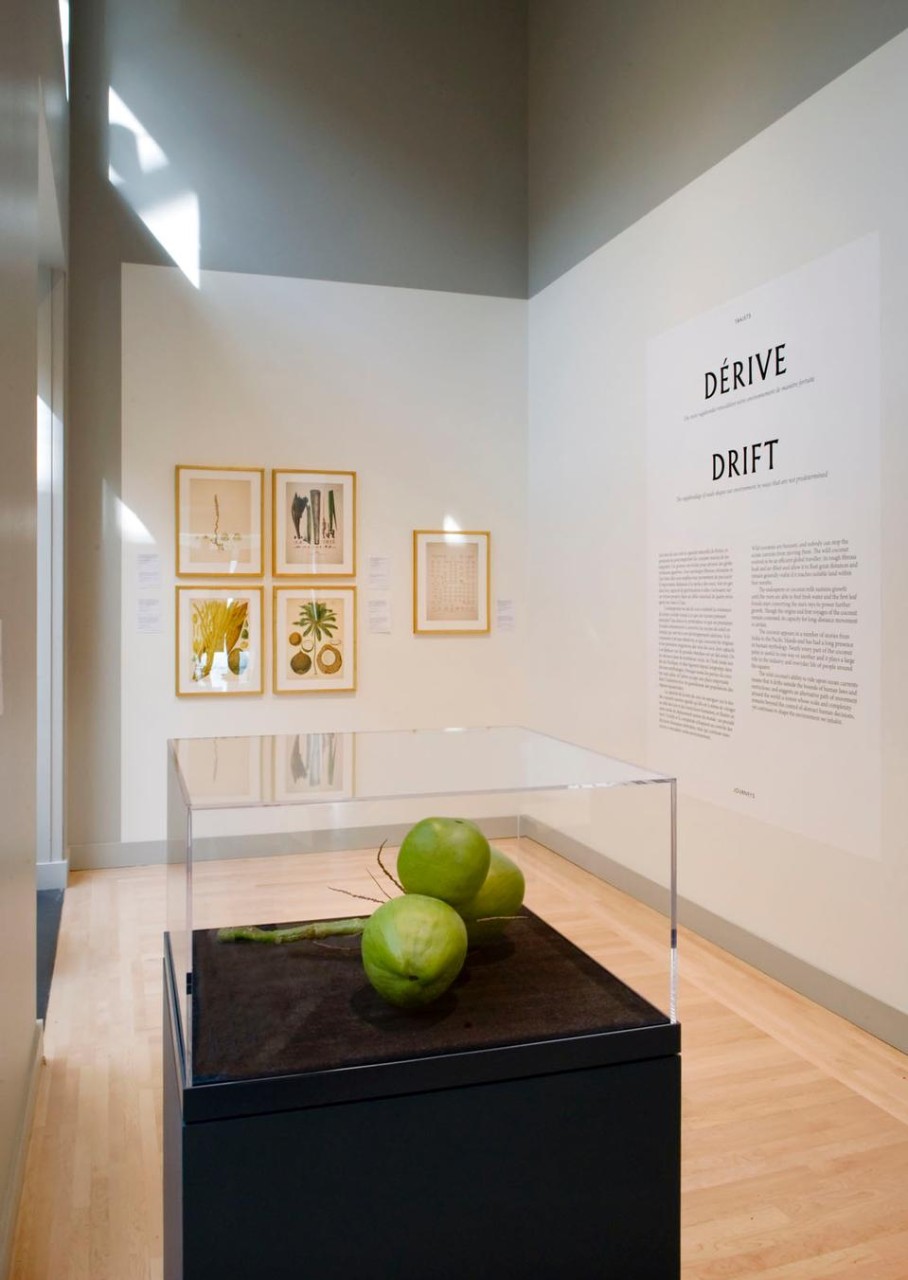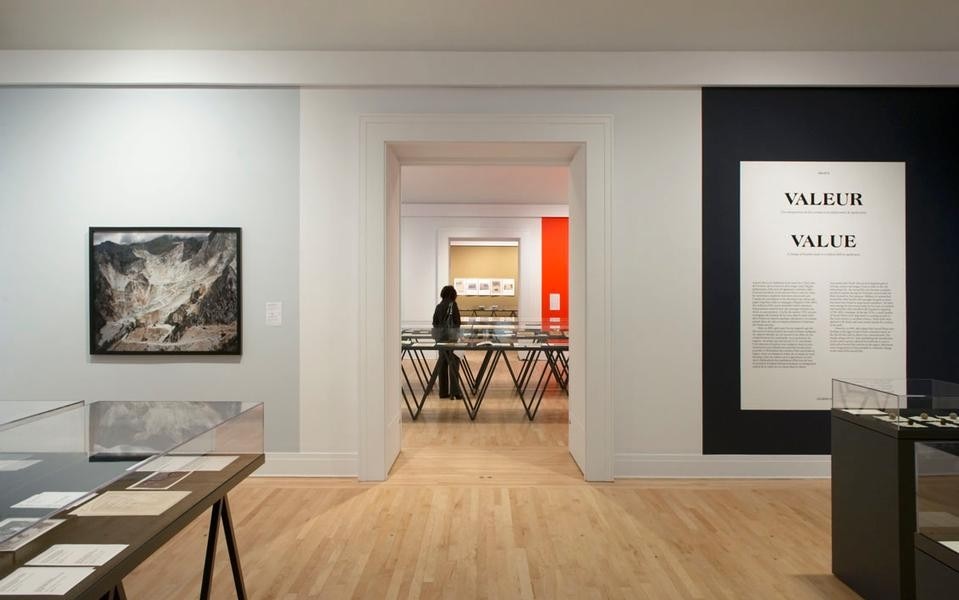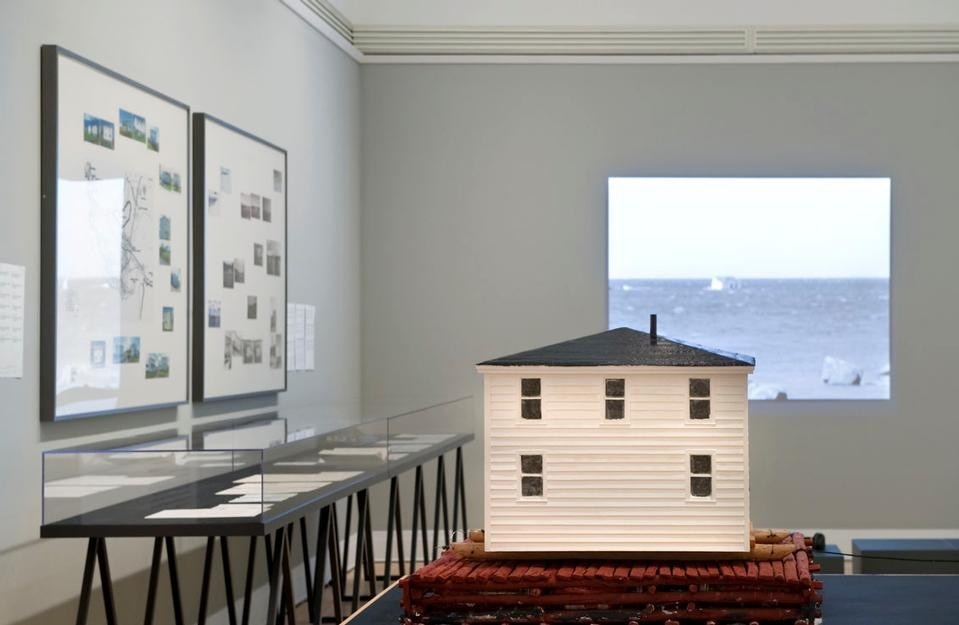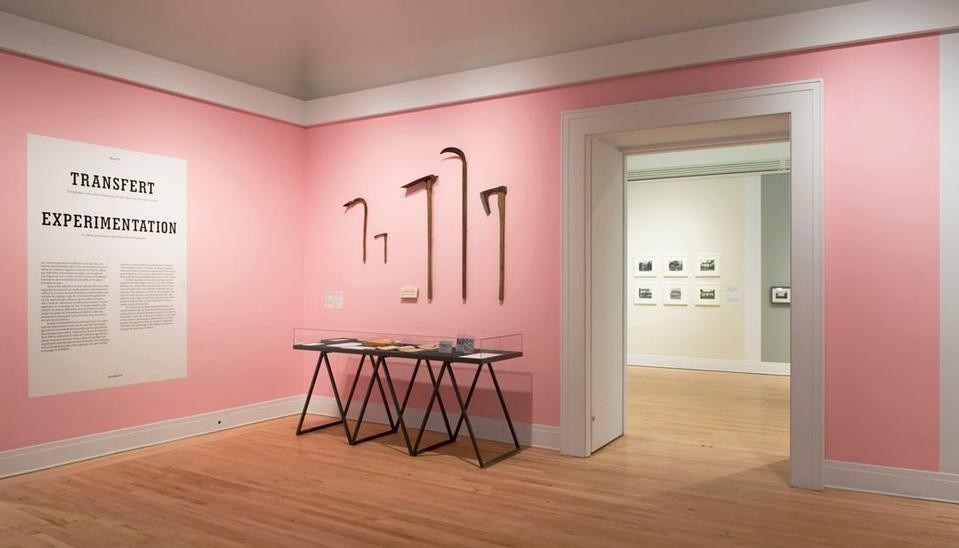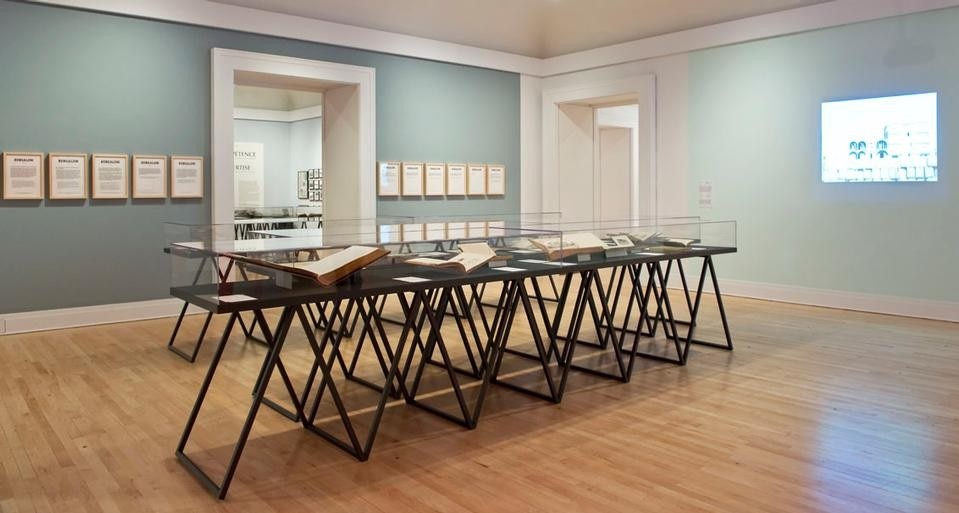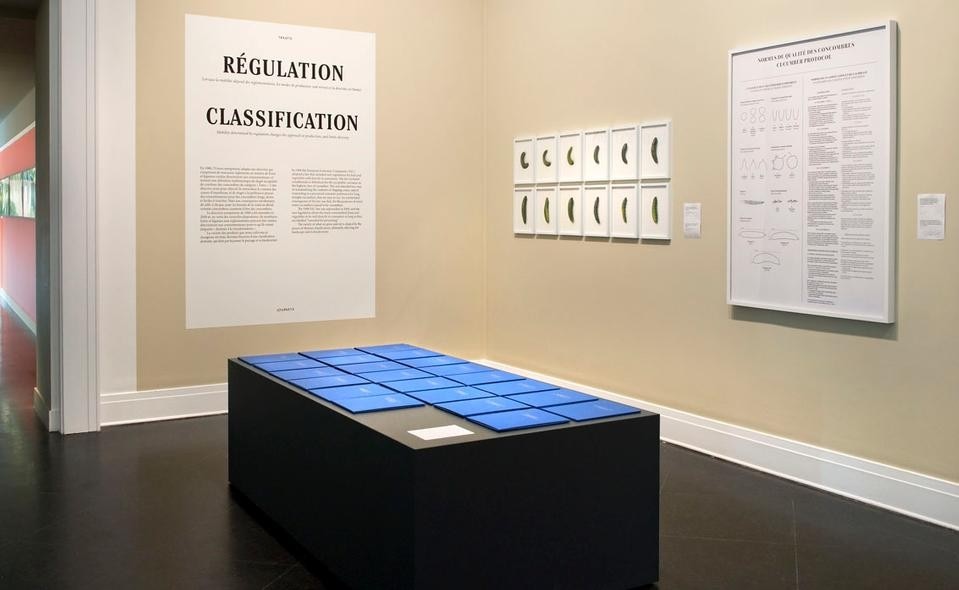The latest entry to this cultural canon is "Journeys", a coolly designed exhibition examining the impact on architecture and urban design by contemporary flows, migrations and encounters made possible due to time and geography's reduced limits. While the disenfranchising, deracinating impact of wars, poverty and natural disasters, the nature of borders and the erosion of already engendered species of languages was the focus of Paul Virilio's Native Land exhibition at the Cartier Fondation in Paris last year, Journeys is more interested in the mobilisation of new communities and living patterns made possible by the increasing ease of transportation.
Journeys is designed by artist Martin Beck and graphic designer Alex DeArmond, demonstrating Beck's ongoing interest in the history of exhibition systems and their relation to minimal and conceptual art. Giovanna Borasi, Curator of Contemporary Architecture at CCA has compiled a shopping list of migrational factors which have led to a different kind of adaptive practice, ranging from the evolution of the bungalow across cultures, the impact of immigrant fishermen on the design of Mazara in Sicily, the buildings made by 19th century American settlers in Liberia, and the effects of the presence of the Chinese government and firms on Brazzaville in Africa since the 90s. While proposals by British architect Wells Coates for a new town on the river open to ocean-going shipping in 1950s Canada didn't go ahead, the adaptations made by Surinamese and other immigrants to the Bijlmermeer estate, Amsterdam, built at the end of post-war reconstruction, a symbol of the employment of Modernist urban planning in service of the Dutch welfare state, made it their personal tool for recognition.
Journeys draws on some superb material from CCA's collection, for example, Max Belcher's photographs of Liberian settler architecture and material on 'bungalow craft'– the ultimate multi-purpose dwelling - to achieve 'bungalow bliss' anywhere, anytime. Borasi excludes portraits in order to focus on the physical transformations in each case, which span different places, eras and cultures. The majority of Journeys reads as an investigation of the impact - with and without architects – of multicultural forces on indigenous territories, while the part which studies food cultivation and the Grand Tour of the coconut, for example, fulfils the transit theme although some its tales are less connected to the alteration of the landscape.
How easy do increasing travel and transit options make the adaptation and evolution in identity of anything? Communities' own experimental and personal 'sense of place' is spurred by the most urgency, as the verve of the Marazan fisherman in spreading out their sciabbica (big fishing nets) to appropriate the city's structure shows; the architect, however great the vision and thousands of airmiles clocked up, often has a harder time effecting change. Moreover Journeys encourages one to reflect how lasting any adaptation might be until the next waves of influence comes along. Lucy Bullivant
Journeys: how travelling fruit, ideas and buildings rearrange our environment
CCA Montréal
to 13 March 2011
